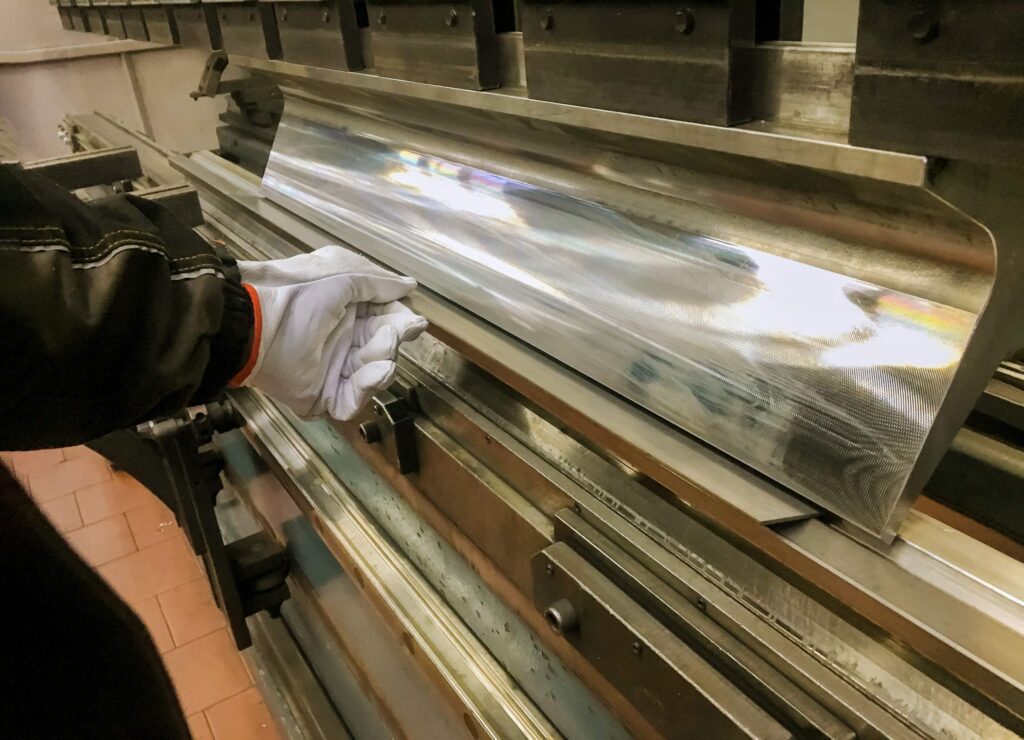
As we stepping into 2024, the sheet metal fabrication
industry is not only embracing change but actively steering it. Technological
advancements, coupled with shifting consumer demands and a global push towards
sustainability, are setting the stage for a transformative year. In this
comprehensive exploration, we will delve into the intricate details of the key
trends shaping sheet metal fabrication in 2024.
Reference Link: Market Analysis 2024-2031
1. Digital Transformation and Industry 4.0 Integration
a. Automation and AI
The integration of automation and artificial intelligence
(AI) is revolutionizing sheet metal fabrication. Smart factories, underpinned
by the Internet of Things (IoT), are becoming the norm, allowing real-time
monitoring and optimization of production processes. Predictive maintenance
powered by data analytics minimizes downtime, enhancing overall operational
efficiency.
b. Industry 4.0 Principles
The adoption of Industry 4.0 principles is reshaping the
manufacturing landscape. Connectivity, interoperability, and information
transparency are driving a new era of smart manufacturing. This not only
streamlines operations but also lays the groundwork for more agile and
responsive production processes.
2. Additive Manufacturing and 3D Printing
a. Complex Component Production
Additive manufacturing, especially 3D printing, is
redefining how sheet metal components are produced. The ability to create
intricate designs and prototypes with reduced waste is a game-changer. The
aerospace and automotive industries, in particular, are benefiting from the
rapid prototyping capabilities and material advancements in 3D printing.
b. Advanced Materials Exploration
The exploration of advanced materials in 3D printing is
expanding the possibilities. From high-performance alloys to innovative
composite materials, manufacturers are pushing the boundaries to meet the
demands of modern applications. The versatility of these materials is opening
doors for new solutions in various industries.
3. Sustainability and Eco-Friendly Practices
a. Energy-Efficient Processes
In response to growing environmental concerns, the sheet
metal fabrication industry is prioritizing sustainability. Manufacturers are
investing in energy-efficient processes, reducing their carbon footprint while
optimizing resource utilization. This not only aligns with environmental
regulations but also reflects a commitment to corporate social responsibility.
Reference Link: NIST – Sustainable Manufacturing
b. Eco-Friendly Materials
The shift towards sustainability is also evident in the
choice of materials. Eco-friendly alloys and recycled metals are gaining
popularity, addressing the need for responsible sourcing. This dual focus on
energy efficiency and material sustainability is shaping the industry’s future.
4. Advanced Materials and Alloys
a. High-Performance Materials
The demand for high-performance materials in sheet metal
fabrication is relentless. Advanced alloys, designed for enhanced strength,
durability, and corrosion resistance, are becoming the backbone of modern
manufacturing. Industries such as aerospace and automotive are leveraging
lightweight alloys like aluminum and titanium for improved efficiency.
b. Lightweight Alloys
The era of lightweight alloys is here. As industries seek to
reduce weight without compromising structural integrity, the adoption of
aluminum, titanium, and magnesium alloys is on the rise. This not only improves
fuel efficiency in transportation but also enhances overall performance in
various applications.
5. Customization and On-Demand Manufacturing
a. Digital Tools for Customization
Consumer preferences are evolving towards personalized and
customized products. To meet this demand, manufacturers are leveraging advanced
digital tools for design and production. Computer-aided design (CAD) and
computer-aided manufacturing (CAM) systems are at the forefront, enabling
efficient on-demand manufacturing.
b. Streamlining Production Processes
The shift towards customization not only caters to
individual customer needs but also streamlines production processes. By
reducing lead times and optimizing inventory management through just-in-time
manufacturing, the industry is achieving a delicate balance between mass
production efficiency and personalized product offerings.
In conclusion, the sheet metal fabrication industry in 2024
is poised for a paradigm shift. From the adoption of digital technologies to
the exploration of advanced materials and a heightened focus on sustainability,
manufacturers are navigating a complex but exciting landscape. Staying informed
and agile in response to these trends will be crucial for industry players
looking to not only survive but thrive in the years to come. The future of
sheet metal fabrication is indeed an unfolding story of innovation, efficiency,
and environmental responsibility.
Related Post:
-
Sheet Metal Bend Relief Guidelines: Ensuring Successful Fabrication
-
Cold Rolled Steel Sheets vs. Hot Rolled Steel Sheets: Which is Right for Your Project?
-
Essential Tools and Equipment for Ductwork Fabrication: Ensuring Efficiency and Quality
-
Sheet Metal Bending in Architectural Design: Transforming Buildings with Curved Metal
-
Precision Sheet Metal Fabrication